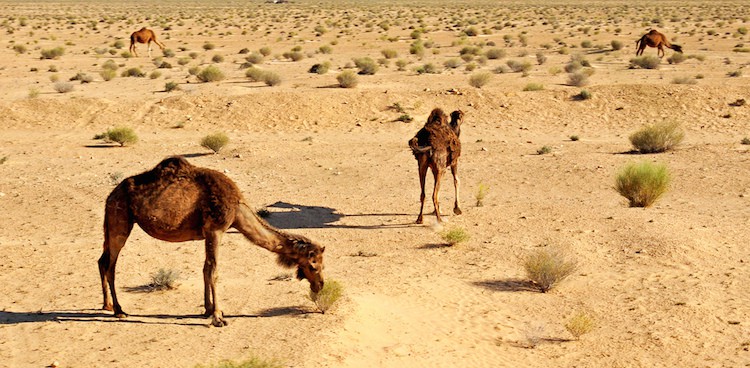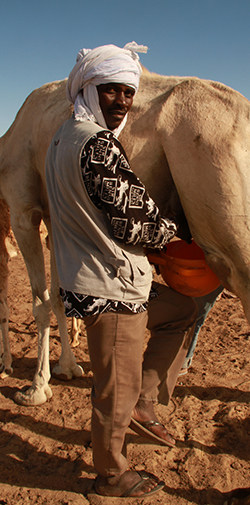
The absence of cheese in camel cultures around the world hasn’t stopped scientists from trying and failing and trying again to produce a European-style camel’s cheese made with an enzyme coagulator. The world saw its first modern-day camel’s cheese in early nineties, when the “dairy in the desert”—Tiviski, based in the capital of West African Mauritania—produced a camembert-like cheese exclusively from the camel’s milk, with the addition of calcium phosphate and a vegetable rennet. The resulting soft, white cheese, called Caravane, made its way just once to New York. Economy of scale and a lack of awareness among customs officials made Caravane’s place on the gastronome’s platter as distant a dream as Mauritania is a place.
For many years, Tiviski was unique in the world for producing the fabled camel’s cheese. Now the company Chr. Hansen of Denmark is shaking things up with its rennet coagulant camel chymosin, or CHY-MAX. By isolating an enzyme in the stomach of a camel calf and replicating it in a laboratory setting, the dairy ingredient producer managed to coagulate camel’s milk to create a hard cheese. “What we also found was that the camel chymosin worked well in cow’s, goat’s, and ewe’s milk cheeses,” says David Stroo, marketing director of Chr. Hansen. “Camel chymosin is specific in its coagulation. It clots kappa-casein protein only. Cow chymosin breaks down other components: immunoglobulins, lactoferrin, et cetera.” By contrast, camel enzyme does not break down these valuable proteins in milk, meaning that the cheese made with a camel enzyme retains more natural nutrients.
“Camel is the first truly novel enzyme for twenty years,” explains Mads Aamann, application specialist at Chr. Hansen. When used in cheesemaking, he adds, “the yields are better, there’s no bitterness, and it prolongs shelf life.”
Increasingly, cheesemakers are using CHY-MAX in pizza cheese for the extra stretch it gives. Stroo claims that 5 to 10 percent of the cow’s milk cheese in the market is already using their camel rennet. You may still have to go to Mauritania to taste camel’s cheese, but with camel rennet making its way into creameries, you could already be eating a little bit of camel.
Want to learn more about the dromedary, or single-humped, camel? Check out our Farm Animal feature of this hardy and awesome animal!
Photo Credit: archer10 (Dennis) via Compfight cc




